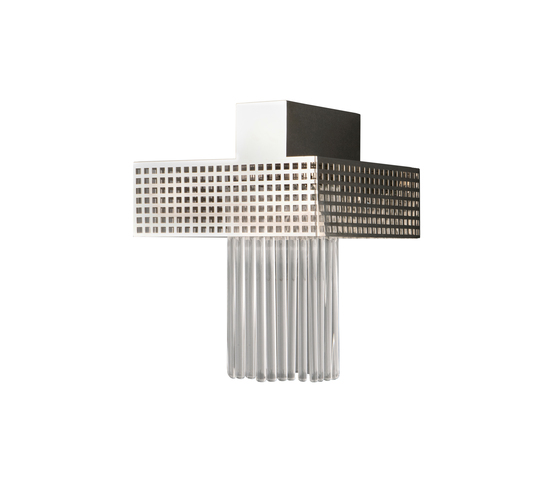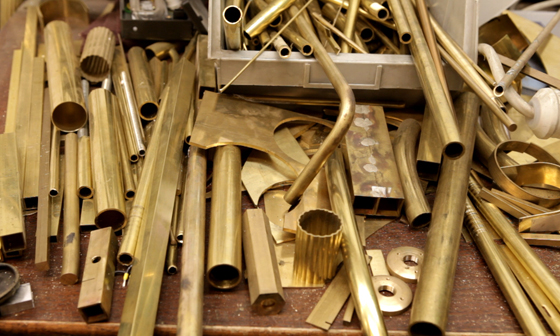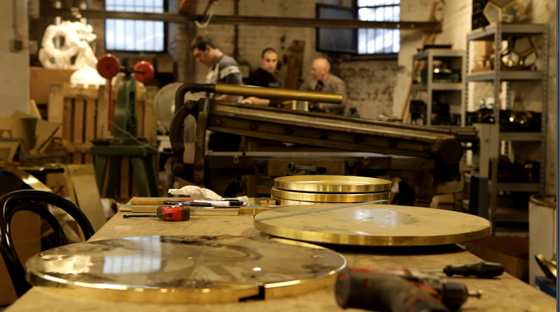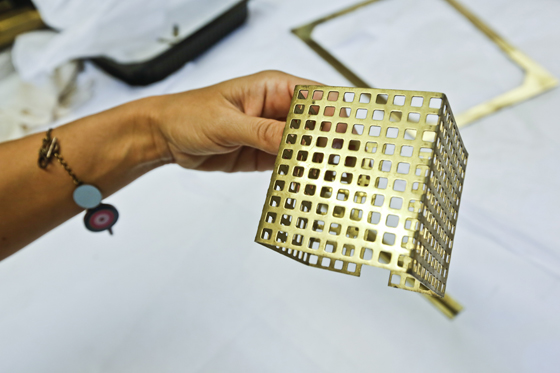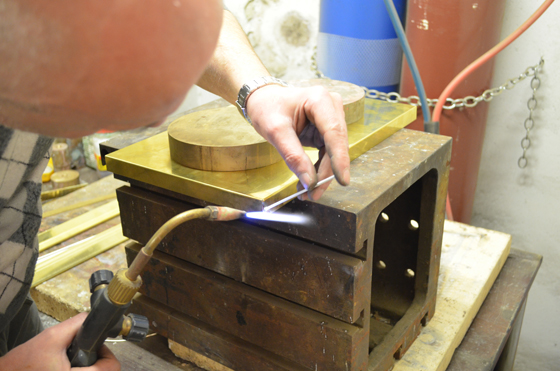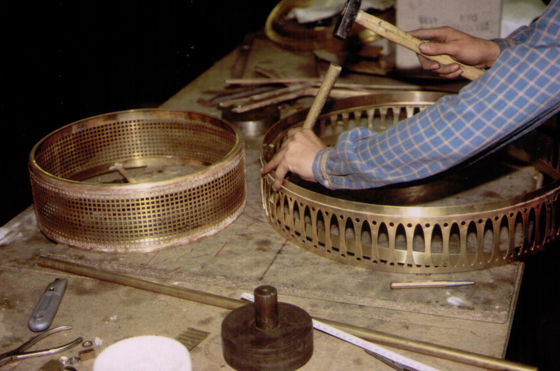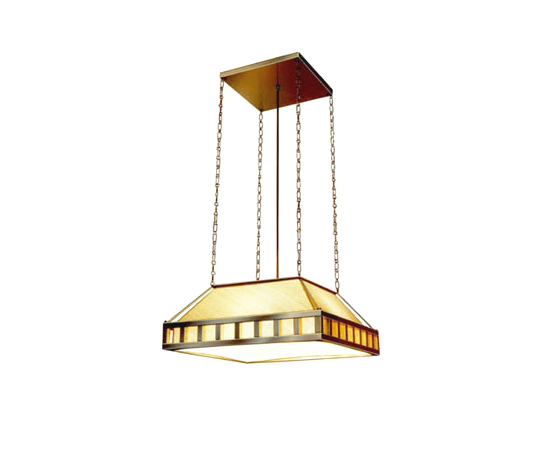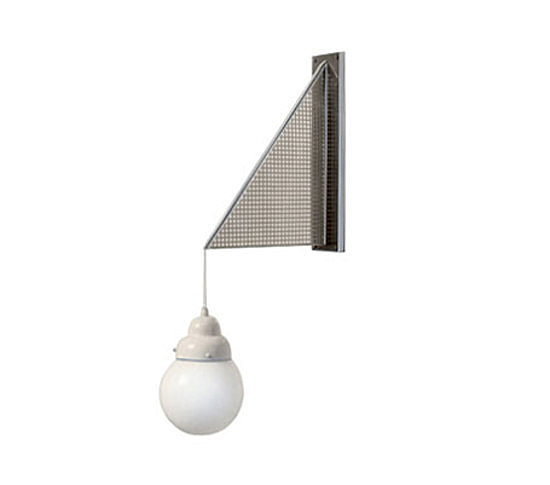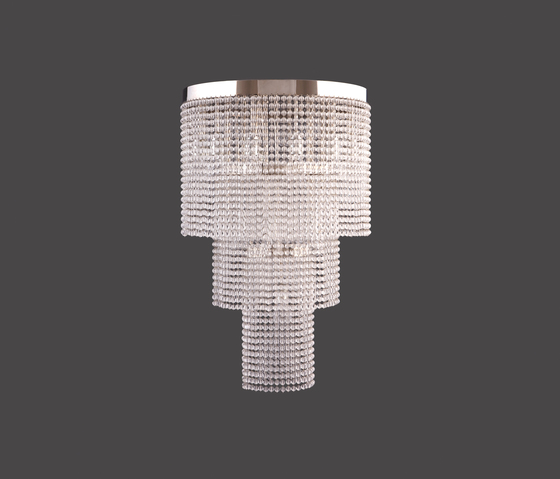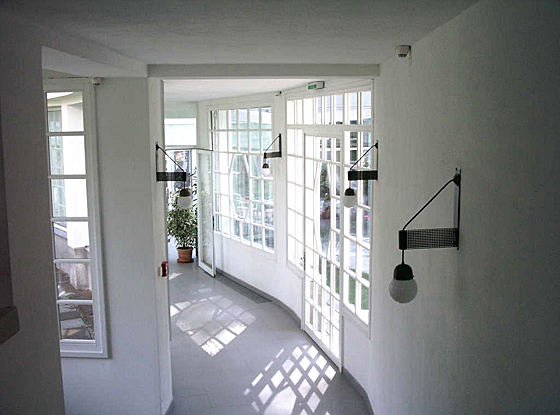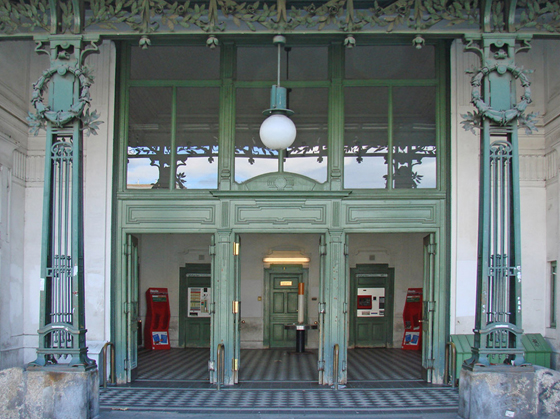History Repeating
Brand story by Simon Keane-Cowell
Wien, Austria
10.12.13
You can never have enough of a good thing, so they say. But lovers of iconic lamps from the early 20th century were for decades deprived of the possibility of owning some of the most striking luminary pieces by the Wiener Werkstätte and the Bauhaus, having long fallen out of production. This is the story of WOKA, the Vienna-based manufacturer that set out to bring a significant slice history back to life.
Coming around again: Vienna-based lighting manufacturer has made it its mission to reissue a raft of iconic early 20th-century designs. Shown here, Adolf Loos's 'Knize 55' pendant light
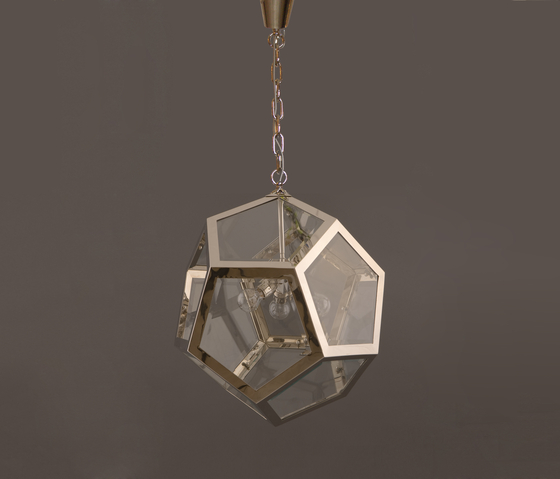
Coming around again: Vienna-based lighting manufacturer has made it its mission to reissue a raft of iconic early 20th-century designs. Shown here, Adolf Loos's 'Knize 55' pendant light
×The Greeks had a word for it. (OK. They had a lot of words.) Peripatetic. Meaning a meandering of sorts, a walking about, as opposed to a direct route.
Aristotle, it’s said, used to deliver his philosophical pearls of wisdom as he wandered about the Lyceum of ancient Athens. Great moments of creative thinking and activity arise from taking the road less travelled, it could be argued.
Wolfgang Karolinsky’s own piece of peripateia saw him embark upon his adult life as a composer but decades later has him running one of the most design-committed design manufacturers internationally. As owner and CEO of WOKA, the Vienna-based brand that has single-handedly introduced some of the most significant pieces of lighting design from the early 20th century to new audiences, Karolinsky has, by all accounts, arrived.
WOKA has acquired the production licences for over 200 lighting pieces by, among others, the celebrated Wiener Werkstätte and the Bauhaus. Seen here, Koloman Moser's 'Floege' from 1904 (top) and Josef Hoffmann's 1903 'Damensalon' wall lamp (above)
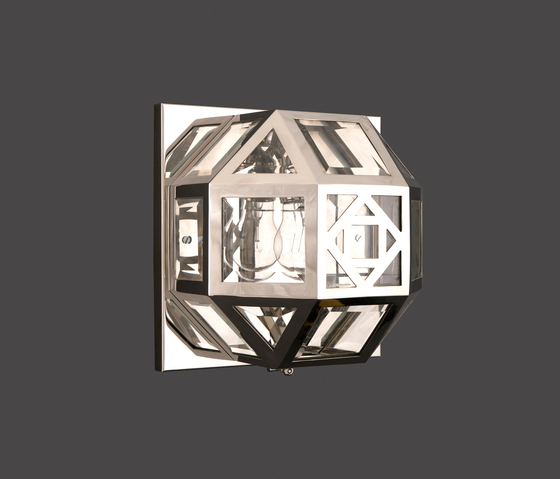
WOKA has acquired the production licences for over 200 lighting pieces by, among others, the celebrated Wiener Werkstätte and the Bauhaus. Seen here, Koloman Moser's 'Floege' from 1904 (top) and Josef Hoffmann's 1903 'Damensalon' wall lamp (above)
×While studying at the University of Music and Performing Arts in Vienna, the entrepreneurial young Karolinksy discovered a harmony of a different kind when he began to deal in antique design pieces, chief among them turn-of-the-20th-century furniture by Austria’s favourite creative son, architect and designer Josef Hoffmann. Commerce for Karolinsky has always been indivisible from his passion for design; parallel to his entry into the world of business he undertook research in a number of libraries, immersing himself in the world of design history. The result: an extensive archive of over 7,500 images and covering almost 100 years of production in wood, metal, ceramic and glass, all photographed by Karolinsky himself.
WOKA chief Wolfgang Karolinsky has brought together a collection of the talents in his Vienna workshop. Here, a small team of designers and craftspeople faithfully manufacture some of the most seminal lighting designs from the last century
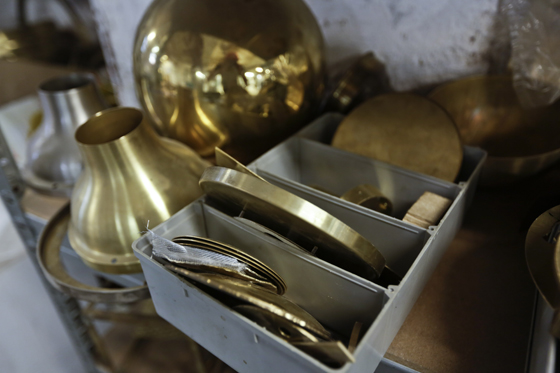
WOKA chief Wolfgang Karolinsky has brought together a collection of the talents in his Vienna workshop. Here, a small team of designers and craftspeople faithfully manufacture some of the most seminal lighting designs from the last century
×Having positioned himself as an expert in the work of Hoffmann and his peers from the renowned Wiener Werkstätte – the Viennese collective of architects, designers and artists who brought a new, proto-modernist language to the applied arts – Karolinsky’s trajectory was to change direction again when he purchased a collection of original lamps from the period. ‘I bought a huge collection of old lamps in the 1970s, in which I was dealing,’ explains Karolinsky. ‘And to restore these antiques, I needed to find the right craftsmen.’ Witnessing this way of working at first hand was for Karolinsky an epiphany of sorts. With the restored pieces sold, why not produce these treasures of design history anew? ‘It’s via the restoration of these original pieces I got into production.’
Karolinsky deliberately keeps his team small in order to retain an overview of the company's operations and to guarantee that the hand-fabricated quality that comes with a WOKA product remains consistently high
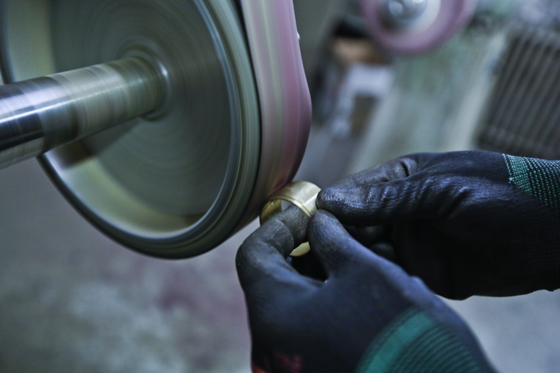
Karolinsky deliberately keeps his team small in order to retain an overview of the company's operations and to guarantee that the hand-fabricated quality that comes with a WOKA product remains consistently high
×Often when history repeats itself, it’s nothing to be welcomed. In this case of Karolinsky and his company WOKA, which has dedicated itself for decades now to the quality reissuing of classic lighting designs from not only the Wiener Werkstätte, but also the Bauhaus and from French Art Deco, it’s something to be celebrated. Craftsmanship lies at the heart of the enterprise, with Karolinksy and his team taking pains to ensure that each piece that leaves their atelier remains true to the fabrication techniques of the original designs. ‘Our workshop is producing in the same way as the Wiener Werstätte did when it was operating from 1903 to 1932,’ says Karolinsky. ‘We are about 20 people and that’s enough. We never wanted to be a big company, just a company that is able to deliver quality.’
The designers whose work WOKA is licensed to produce reads like a Who's Who of design history. Shown here, 'BIL1/50' pendant light by the Wiener Werkstätte (top), Josef Hoffman's 'JH1' wall light (middle) and the Bauhaus 'Office 1' floor lamp (above)

The designers whose work WOKA is licensed to produce reads like a Who's Who of design history. Shown here, 'BIL1/50' pendant light by the Wiener Werkstätte (top), Josef Hoffman's 'JH1' wall light (middle) and the Bauhaus 'Office 1' floor lamp (above)
×The designers whose work WOKA is licensed to produce read like a Who’s Who of the Vienna design pantheon. In addition to Hoffmann and Koloman Moser, the manufacturer has reissued striking table, ceiling, wall and floor lamps, as well as chandelier pieces, by the likes of Adolf Loos, Otto Wagner and Carl Witzmann. Commerically minded Karolinsky is without doubt – this is a business, after all – but it’s also more than that, the entrepreneur’s absolute passion for the oft forgotten designs he brings back to life inextricable from the daily business of producing and selling. ‘We have had the licence for a very strange, very early Josef Hoffmann design with the punched sheet for over 30 years,’ he explains. ‘But nobody wanted it. Yet I’ve loved it all this time because I know it’s great design. Hoffmann really invented the modern. It’s only now that people are starting to buy these kinds of lamps that I’ve kept for decades. A normal businessman would have got rid of them a long time ago.’
Iconic lighting from WOKA: 'CR1' chandelier by Josef Hoffmann (top) and Adolf Loos's 'Brioni' chandelier (above)
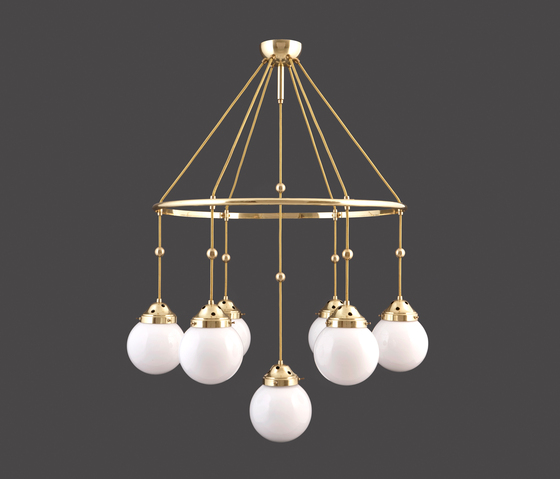
Iconic lighting from WOKA: 'CR1' chandelier by Josef Hoffmann (top) and Adolf Loos's 'Brioni' chandelier (above)
×Designs that take to stage a second time, particularly after a long absence, aren’t with their own set of problematics, however. ‘Original’, ‘reissue’, ‘reproduction’. It may just seem like a bunch of semantics, but attending each of these terms is a particular value. At what point is a classic design no longer faithful to its original iteration once it’s been subjected to modifications, ones due either to changes in technology or to shifts in market appeal or consumer need? For Karolinsky, whose company holds over 200 design licences, it’s not always been easy to convince people of the authenticity, as it were, of his enterprise, but, that said, he has witnessed over time a definite change in the way his products are viewed. ‘In the early days, people often thought I was doing fakes,’ he says. ‘They were very purist. Now there are new generations of admirers of these works and they appreciate the quality of our production. They know the original pieces are in museums and not available to buy.’
WOKA-produced lamps are particularly valued by architects and designers for their quality and aesthetics. Seen here, the Vienna State Opera (top) and the Purkersdorf Sanatorium in Vienna, designed by Josef Hoffmann (above)
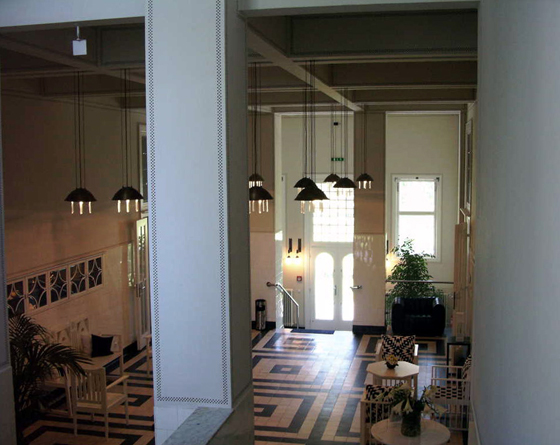
WOKA-produced lamps are particularly valued by architects and designers for their quality and aesthetics. Seen here, the Vienna State Opera (top) and the Purkersdorf Sanatorium in Vienna, designed by Josef Hoffmann (above)
×But how does Karolinsky decide how far an old design can be modified? ‘Trial and error. We have a team of young designers working for WOKA and they make small changes. They might take an old Adolf Loos and change the colour of the wire, for example. If the reaction is a good one, we keep it. If not, we go back to the original model.’ This responsive approach to the market has stood the company in good stead. Producing in batches, the atelier makes a small number of a particular product when an order comes in (more than is required by the customer), then holds the remaining items in stock, ready for finishing according to the next customer’s specifications. Almost a dozen types of finish are offered.
High-end projects provide the perfect home for WOKA lighting products: Otto Wagner Vienna Stadtbahn architecture (top) and the Harry Winston salon at Harrods, London (above)
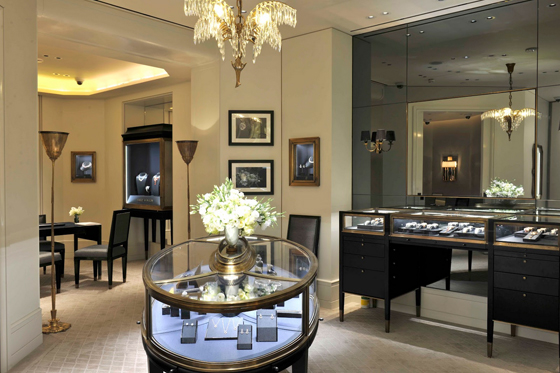
High-end projects provide the perfect home for WOKA lighting products: Otto Wagner Vienna Stadtbahn architecture (top) and the Harry Winston salon at Harrods, London (above)
×It’s precisely this dynamic, flexible way of working, combined with an extensive product offering, that has seen WOKA develop a significant presence beyond the German-speaking countries. Exporting over 90% of their products, WOKA’s key markets are now the US and the UK, with the latter operating as a gateway to Russia and the Middle East because, as Karolinsky puts it quite simply, ‘they love British interior designers’. Having previously relied on selling to the trade as the mainstay of its business, the company as quick off the mark when the internet opened up as a viable commercial channel and now sells directly to end customers, as well as to architects, planners and project managers. Architects in particular value the aesthetics and quality of WOKA’s lamps, testified to by the number of high-end interior-architectural projects for which they have been specified. From iconic Hoffmann- and Loos-design buildings and interiors in Vienna, such as the Purkersdorf Sanatorium and the American Bar, to the Gild Hall hotel in New York and Amsterdam’s Central Station, the cream of Wiener Werkstätte, Bauhaus and Art Deco lighting design has been installed in some of the most memorable, high-end spaces internationally.
Woka CEO, Wolfgang Karolinsky: 'Our workshop is producing in the same way as the Wiener Werstätte did. We never wanted to be a big company, just a company that is able to deliver quality'
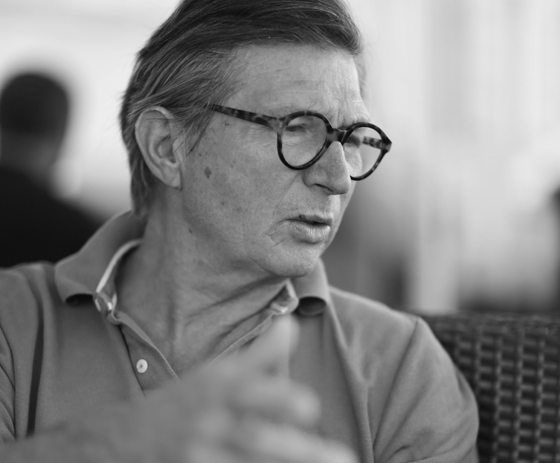
Woka CEO, Wolfgang Karolinsky: 'Our workshop is producing in the same way as the Wiener Werstätte did. We never wanted to be a big company, just a company that is able to deliver quality'
×Job done, you’d think. But not so. Resting on one’s laurels is an expression you certainly can’t apply to Karolinsky. As commercial custodian, as it were, of a valuable slice of design history, he is always on the look-out for new old lighting pieces to add to the WOKA collection. ‘We’ve just added our 34th product for 2013 to the website,’ he says proudly. ‘The famous Adolf Loos table from 1908 for the American Bar in Vienna. Plus a Charles Rennie Mackintosh – the Glasgow street lamp – and the Hoffman Fifth Avenue lamp for the Wiener Werkstätte Showroom in New York. There is still plenty that I’d like to produce, but they will come in the next few years.’ With more ground to cover, Karolinsky is, it transpires, still on the road.


